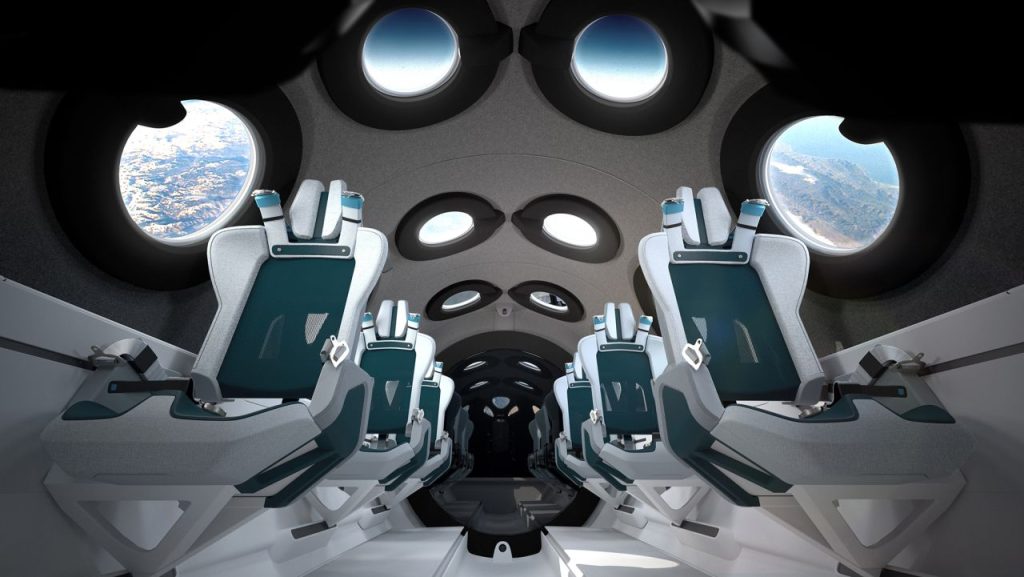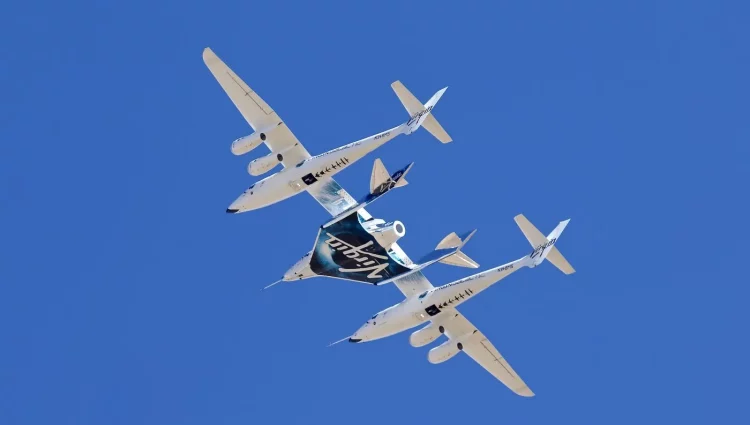Space tourism is no longer a far-off dream; it is rapidly becoming a tangible reality. With commercial space flights on the rise, companies are eager to make space accessible to the public in a way that was once reserved for astronauts. This new industry promises to revolutionize travel, offering adventure and a unique perspective of Earth that few have ever experienced.
The space tourism market has grown significantly in recent years, with key players like Blue Origin, SpaceX, and Virgin Galactic leading the charge. These companies are working on innovative technologies and business models to make space travel safer, more affordable, and accessible to ordinary people—not just the elite few. As these companies develop their spacecraft and refine their technologies, they are opening the door to an entirely new form of tourism.
In this article, we will delve into the booming commercial space industry, examining the companies at the forefront of the space tourism race, the technological challenges they face, and the potential implications for the future of travel and humanity’s exploration of space.
1. The Beginnings of Commercial Space Travel
While space exploration has always been the domain of government space agencies such as NASA, the commercial space industry began to take off in the early 2000s. Space pioneers like Elon Musk, Richard Branson, and Jeff Bezos recognized that private companies could play a critical role in expanding humanity’s reach beyond Earth.
The concept of space tourism began to materialize in the late 1990s, with private companies like Space Adventures offering suborbital spaceflights to wealthy individuals. However, it was only with the advent of companies like Virgin Galactic, Blue Origin, and SpaceX that space tourism began to move beyond the realm of wealthy private investors into the commercial sector. These companies have since been working toward making the once-distant dream of space tourism a reality for the general public.
2. Key Players in the Commercial Space Tourism Race
The rise of space tourism has been driven by a handful of visionary entrepreneurs and companies that have worked tirelessly to make space travel possible. Below are the key players who are shaping the future of commercial space flights:
1. Virgin Galactic
Founded by Sir Richard Branson in 2004, Virgin Galactic is one of the most well-known names in space tourism. The company is developing a spaceplane, SpaceShipTwo, which is designed to carry passengers on suborbital flights to the edge of space.
Virgin Galactic’s space tourism experience offers passengers a few minutes of weightlessness and a view of Earth’s curvature from space. While the company initially struggled with development delays, Virgin Galactic made headlines in 2021 when Richard Branson himself successfully flew aboard the spacecraft. The company is now preparing to offer regular commercial flights, with tickets priced at around $450,000 each.
Virgin Galactic’s spaceplane is a unique design, utilizing a mothership to carry the vehicle to high altitude before releasing it to travel to the edge of space. The company’s efforts are a significant step toward making space tourism a reality, and it continues to be a leading contender in the space tourism race.
2. Blue Origin
Blue Origin, founded by Jeff Bezos in 2000, has become another major player in the space tourism industry. The company is developing the New Shepard rocket system, a fully reusable suborbital vehicle designed to carry tourists to space. New Shepard has been successfully tested several times, with Bezos himself taking the first crewed flight in July 2021.
The New Shepard rocket is designed to carry passengers up to around 62 miles above Earth, crossing the Kármán line—the internationally recognized boundary of space. The experience lasts about 10 minutes, including several minutes of weightlessness before returning to Earth. Blue Origin is aiming to make space tourism more affordable, with ticket prices starting at around $200,000.
One of Blue Origin’s key advantages is its reusable spacecraft, which can dramatically reduce the cost of space travel. By launching multiple flights from a single spacecraft, the company hopes to drive down the cost of access to space and create a more sustainable business model for space tourism.
3. SpaceX
Founded by Elon Musk in 2002, SpaceX has become a leader in commercial space exploration, particularly with its Falcon rockets and the Dragon capsule. Unlike Virgin Galactic and Blue Origin, SpaceX’s focus has been on more than just suborbital space tourism. The company is actively developing a reusable spacecraft capable of traveling to orbit and beyond.
SpaceX’s Crew Dragon capsule has already successfully transported astronauts to the International Space Station (ISS) as part of NASA’s Commercial Crew Program. However, SpaceX’s ambitions extend well beyond orbital missions. In September 2021, the company launched Inspiration4, the first all-civilian space mission, which orbited Earth for three days, marking a major milestone in the commercialization of space.
SpaceX is also developing the Starship spacecraft, which is intended for deep space travel and could eventually be used for moon and Mars missions. While space tourism with SpaceX currently focuses on orbital flights, the company’s long-term goal is to create a pathway for regular travel to space, potentially offering trips to the Moon or even Mars in the future.
4. Other Emerging Players
While Virgin Galactic, Blue Origin, and SpaceX dominate the commercial space tourism landscape, several other companies are also entering the race. These include Axiom Space, which plans to build private space stations and offer commercial missions to the ISS, and Orion Span, which aims to develop a luxury hotel in space.
Moreover, emerging technologies in the field of spacecraft reusability, AI-assisted flight systems, and rocket propulsion are expected to make space tourism more feasible and less expensive. As the industry evolves, new players and partnerships are likely to emerge, further fueling competition and innovation in the space tourism sector.

3. Challenges in Space Tourism
While the potential for space tourism is immense, there are still several challenges that companies must overcome to make space travel accessible to the masses. Some of the key challenges include:
1. Cost
Currently, space tourism is limited to only the wealthiest individuals due to the high cost of tickets. For instance, Virgin Galactic’s tickets are priced at approximately $450,000, and Blue Origin’s suborbital flights are expected to cost between $200,000 and $500,000. As technology advances and flight frequency increases, costs will likely decrease, making space tourism more affordable. However, bringing the price down to an everyday consumer level will take time.
2. Safety
Space travel involves inherent risks, and ensuring the safety of passengers is paramount. Both Virgin Galactic and Blue Origin have conducted extensive testing of their spacecraft, but space tourism flights still face risks that need to be addressed. Overcoming technical failures, ensuring safe launches and landings, and providing reliable emergency procedures are essential steps to gaining public trust in commercial space travel.
3. Environmental Impact
The environmental impact of commercial space flights is another area of concern. While the number of space tourism flights is currently small, the carbon emissions generated by rocket launches could have long-term effects on the planet’s atmosphere. Companies will need to explore sustainable technologies, such as green propellants and carbon offset programs, to reduce their environmental footprint.
4. The Future of Space Tourism
Despite these challenges, the future of space tourism looks promising. As more companies enter the race and technology advances, the cost of space flights will decrease, making space travel more accessible to the public. Within the next few decades, we could see space tourism become a mainstream industry, with regular flights offering suborbital, orbital, and even lunar tourism experiences.
As the space tourism industry grows, it could have wide-ranging implications for both commercial travel and space exploration. Private sector involvement in space could accelerate humanity’s efforts to explore the Moon, Mars, and beyond, as the commercial space sector works hand-in-hand with government space agencies.
5. Conclusion
The rise of commercial space flights marks an exciting new era in human exploration. With companies like Virgin Galactic, Blue Origin, and SpaceX leading the way, the dream of space tourism is fast becoming a reality. As the industry matures, we can expect space travel to become more affordable and accessible, offering people a chance to experience the wonders of space and redefine what it means to travel.
Space tourism also opens the door to greater opportunities for research, space commercialization, and even interplanetary exploration. The future of space tourism holds limitless possibilities, and as technology continues to advance, we may soon find ourselves embarking on journeys to the stars.
















































Discussion about this post